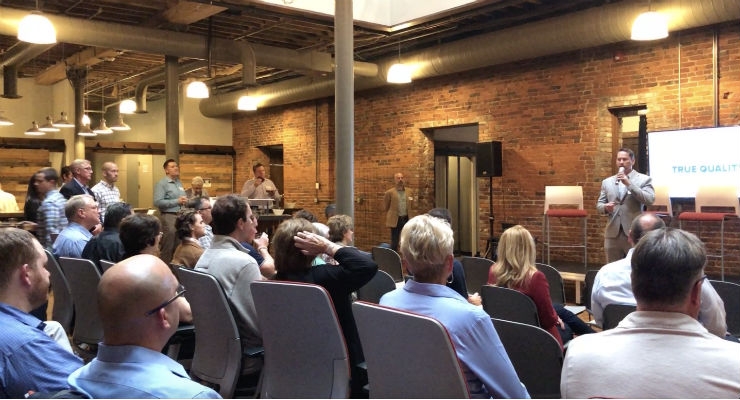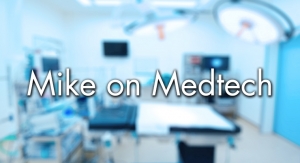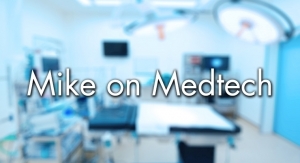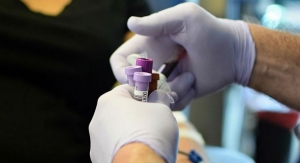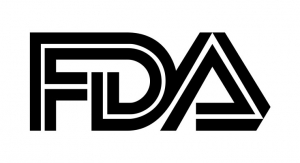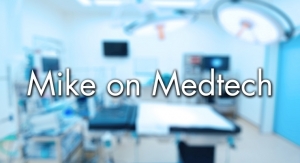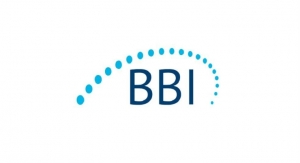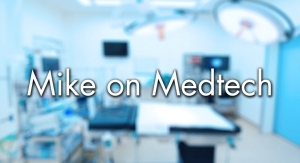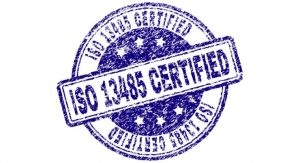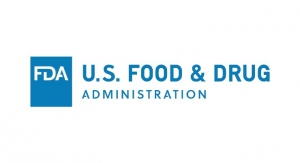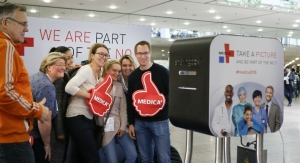Sean Fenske, Editor-in-Chief04.03.19
There’s a great amount of concern among many in the industry over the revisions hitting the medical device regulatory sector all around the same time. Keeping tabs on the numerous changes, which ones will impact your company and products, and how to adjust to remain complaint can certainly be overwhelming. As such, it’s important to maintain close partners whose sole mission is to ensure everything that needs to happen does and in a timely manner.
With this in mind, I reached out to Jon Speer, founder and vice president of QA/RA at Greenlight Guru. His firm offers a quality management system that’s specifically developed for the medical device industry. I asked him about his company, his insights on the coming regulatory changes, and the story behind his collaboration with the FDA.
Sean Fenske: Please tell me about Greenlight Guru. What do you do?
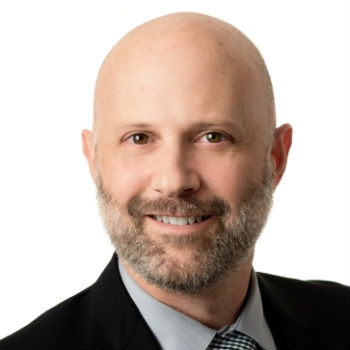
Jon Speer is the founder and vice president of QA/RA at Greenlight Guru.
Jon Speer: Greenlight Guru is the first, and only medical device quality management system (MDQMS). QMSs have existed in a wide range of formats for quite some time; however, Greenlight Guru is the first to embrace cloud technology to develop a quality management system specifically designed to meet the unique needs of the medical device industry. We have developed a suite of pre-market, post-market, and consultative solutions, backed by the latest technology and regulatory compliance tools.
Fenske: I know you could get different responses depending upon who you ask, but in your opinion, what is the most pressing regulatory issue for the industry?
Speer: It's a little cliché, but change is constant. And this is especially true for the medical device industry. If we look at the past few years, we've had some significant changes to the regulatory landscape and on a global scale—like ISO 13485:2016, MDSAP, and now with the new MDR. Any one of these would be a huge undertaking for any company, let alone multiple happening at once.
If you combine all of these very significant changes together, it's pretty daunting for a lot of companies. And we don't know what's going to happen in 2020—or the rest of 2019, for that matter. There's been ongoing talk about FDA’s plans to move away from their quality system regulation that’s been in place for more than 20 years—21 CFR Part 820—and adopting the globally harmonized standard of ISO 13485. I think it's time for companies to really consider how nimble they can be from a systems approach to be able to easily adapt to these changes.
Fenske: Speaking of the new standard in the EU, what are the biggest challenges for companies seeking to comply with the new MDR?
Speer: At this point, companies don’t know what resources are going to be available from auditing organizations or from notifying bodies. At this time, there is only one notified body that has been through the proper process and approved by the European Commission to conduct conformity assessments and issue CE mark certificates.
One notified body is not going to have the capacity to keep up with the demands of the marketplace, and we're a little less than a year and a half to go before the deadline of the new MDR that will go into effect. Unfortunately, the EU has been very clear that there's no grandfather clause. I think the challenge is going to be, “Are there going to be enough notified body resources to keep up with the demand for the products that are seeing a profit margin in Europe?” My concern is that there is probably not.
Fenske: With regard to potential regulatory changes in 2019, 2020, or beyond, what are your thoughts on the 510(k) Modernization announcement?
Speer: I don't know if it's serendipity; I don't know if it's intentional, but everything that has been coming from FDA mid-2018 to present has been about trying to be more accommodating to medical device companies and trying to figure out more predictable ways for them to get to market. Some people say there's not a lot that's new here. But I think what we should take from the communication from FDA is that they are very keen to work with the medical device industry on streamlining processes in order to bring new products to market as fast as possible. FDA is much more progressive today, and much more interested in trying to collaborate and partner with industry stakeholders versus being the gatekeeper.
Fenske: If the FDA is going to make changes to the regulatory pathway, where should they be focused?
Speer: Many of the things we heard from FDA in the latter part of 2018 were about the 510(k) process, which makes sense because Class II is the most common designation for a medical device to gain 510(k) market clearance.
We’ve also heard a great deal on De Novo clearances. Before De Novo, the lack of a predicate device would be the kiss of death for many companies due to the time and expense associated with getting a Class III device to market. De Novo allows devices that have a risk profile closer to a Class II device to get to market faster. FDA has done substantial work on the De Novo program to encourage both innovation and device quality, and I think more companies will utilize this route as their regulatory pathway of choice.
Companies like Apple made progress last year when debuting their own medical device, leveraging the De Novo pathway. I think we'll see other companies—including non-traditional medical device companies—do the same sort of thing, bringing new, exciting technology into the healthcare space.
Fenske: Do you think we need a timeline restriction on predicate devices as part of any 510(k) revisions?
Speer: Predicate devices are a hot topic, especially after some documentaries have come out in the last year that have positioned predicate devices in a negative light.
I would say, however, most modern regulatory professionals have not been using predicates that are older than 10 years. When I would put together 510(k) applications as an engineer and consultant, I wanted something as current as possible to use as a predicate. A device that has been cleared within the past couple years would give you a pretty good indication as far as what the FDA’s expectations are. There is a risk as a regulatory professional in picking an older predicate because the best practices that are in place at FDA evolve over time. So, if you pick something that's 15-years-old and base your submission on that, you're setting yourself up for some challenges.
I think it is appropriate the FDA has stated this is a best practice for a good regulatory professional; you should always try to pick the most recent, most relevant, most appropriate predicates for your 510(k) as you possibly can.
Fenske: Last year, Greenlight Guru partnered with FDA on their Case for Quality program. Can you share the experience and goal of that initiative?
Speer: Starting in 2011, FDA observed medical device manufacturers were slow to adopt certain technologies due to regulatory hurdles. Unfortunately, this resulted in poor quality products and processes because manufacturers were only focused on compliance. In the case of quality management systems, manufacturers were hesitant to adopt cloud-based solutions because of the perceived hurdles of testing and evaluation. As a by-product, their device quality—and their users—suffered; this is what actually led us to develop the Greenlight Guru software platform.
Early on, the existence of the Case for Quality program wasn’t widely known within the industry—and even today, I don’t think it's as well-known as it should be. Partnering with the FDA on the Case for Quality to further educate the industry on device quality was a no-brainer. Whether or not companies formally enroll in the program, better understanding the appraisal method, areas of practice, and how you should monitor your products and your processes is vital to creating positive outcomes for patients and end users.
Fenske: Most recently, Greenlight Guru has announced a True Quality Roadshow that will take place in 2019, with stops scheduled in eight cities. Can you tell me more about this initiative and why you’re doing it?
Speer: We developed the True Quality Roadshow shortly after partnering with FDA to help promote the benefits of their Case for Quality initiative. The True Quality Roadshow furthers our mission to help improve the quality of life by helping device makers imagine, introduce, and advance higher quality devices faster, with less risk.
Each stop of the True Quality Roadshow will include a networking event, a panel discussion with industry professionals, and discussions around the current state of the medical device industry, regulatory updates, and best practices in attaining “True Quality.”
Fenske: While you have substantial initiatives already on your plate, what’s next for Greenlight Guru?
Speer: FDA and the EU MDR have signaled that major changes are on the way. We will continue to focus our efforts on helping our users and medical device community stay abreast of the latest regulatory changes. Leveraging the latest technologies gives us the opportunity to implement innovative solutions within our quality system that will help maximize a product team’s visibility of possible sources of risks, before they occur.
With this in mind, I reached out to Jon Speer, founder and vice president of QA/RA at Greenlight Guru. His firm offers a quality management system that’s specifically developed for the medical device industry. I asked him about his company, his insights on the coming regulatory changes, and the story behind his collaboration with the FDA.
Sean Fenske: Please tell me about Greenlight Guru. What do you do?

Jon Speer is the founder and vice president of QA/RA at Greenlight Guru.
Fenske: I know you could get different responses depending upon who you ask, but in your opinion, what is the most pressing regulatory issue for the industry?
Speer: It's a little cliché, but change is constant. And this is especially true for the medical device industry. If we look at the past few years, we've had some significant changes to the regulatory landscape and on a global scale—like ISO 13485:2016, MDSAP, and now with the new MDR. Any one of these would be a huge undertaking for any company, let alone multiple happening at once.
If you combine all of these very significant changes together, it's pretty daunting for a lot of companies. And we don't know what's going to happen in 2020—or the rest of 2019, for that matter. There's been ongoing talk about FDA’s plans to move away from their quality system regulation that’s been in place for more than 20 years—21 CFR Part 820—and adopting the globally harmonized standard of ISO 13485. I think it's time for companies to really consider how nimble they can be from a systems approach to be able to easily adapt to these changes.
Fenske: Speaking of the new standard in the EU, what are the biggest challenges for companies seeking to comply with the new MDR?
Speer: At this point, companies don’t know what resources are going to be available from auditing organizations or from notifying bodies. At this time, there is only one notified body that has been through the proper process and approved by the European Commission to conduct conformity assessments and issue CE mark certificates.
One notified body is not going to have the capacity to keep up with the demands of the marketplace, and we're a little less than a year and a half to go before the deadline of the new MDR that will go into effect. Unfortunately, the EU has been very clear that there's no grandfather clause. I think the challenge is going to be, “Are there going to be enough notified body resources to keep up with the demand for the products that are seeing a profit margin in Europe?” My concern is that there is probably not.
Fenske: With regard to potential regulatory changes in 2019, 2020, or beyond, what are your thoughts on the 510(k) Modernization announcement?
Speer: I don't know if it's serendipity; I don't know if it's intentional, but everything that has been coming from FDA mid-2018 to present has been about trying to be more accommodating to medical device companies and trying to figure out more predictable ways for them to get to market. Some people say there's not a lot that's new here. But I think what we should take from the communication from FDA is that they are very keen to work with the medical device industry on streamlining processes in order to bring new products to market as fast as possible. FDA is much more progressive today, and much more interested in trying to collaborate and partner with industry stakeholders versus being the gatekeeper.
Fenske: If the FDA is going to make changes to the regulatory pathway, where should they be focused?
Speer: Many of the things we heard from FDA in the latter part of 2018 were about the 510(k) process, which makes sense because Class II is the most common designation for a medical device to gain 510(k) market clearance.
We’ve also heard a great deal on De Novo clearances. Before De Novo, the lack of a predicate device would be the kiss of death for many companies due to the time and expense associated with getting a Class III device to market. De Novo allows devices that have a risk profile closer to a Class II device to get to market faster. FDA has done substantial work on the De Novo program to encourage both innovation and device quality, and I think more companies will utilize this route as their regulatory pathway of choice.
Companies like Apple made progress last year when debuting their own medical device, leveraging the De Novo pathway. I think we'll see other companies—including non-traditional medical device companies—do the same sort of thing, bringing new, exciting technology into the healthcare space.
Fenske: Do you think we need a timeline restriction on predicate devices as part of any 510(k) revisions?
Speer: Predicate devices are a hot topic, especially after some documentaries have come out in the last year that have positioned predicate devices in a negative light.
I would say, however, most modern regulatory professionals have not been using predicates that are older than 10 years. When I would put together 510(k) applications as an engineer and consultant, I wanted something as current as possible to use as a predicate. A device that has been cleared within the past couple years would give you a pretty good indication as far as what the FDA’s expectations are. There is a risk as a regulatory professional in picking an older predicate because the best practices that are in place at FDA evolve over time. So, if you pick something that's 15-years-old and base your submission on that, you're setting yourself up for some challenges.
I think it is appropriate the FDA has stated this is a best practice for a good regulatory professional; you should always try to pick the most recent, most relevant, most appropriate predicates for your 510(k) as you possibly can.
Fenske: Last year, Greenlight Guru partnered with FDA on their Case for Quality program. Can you share the experience and goal of that initiative?
Speer: Starting in 2011, FDA observed medical device manufacturers were slow to adopt certain technologies due to regulatory hurdles. Unfortunately, this resulted in poor quality products and processes because manufacturers were only focused on compliance. In the case of quality management systems, manufacturers were hesitant to adopt cloud-based solutions because of the perceived hurdles of testing and evaluation. As a by-product, their device quality—and their users—suffered; this is what actually led us to develop the Greenlight Guru software platform.
Early on, the existence of the Case for Quality program wasn’t widely known within the industry—and even today, I don’t think it's as well-known as it should be. Partnering with the FDA on the Case for Quality to further educate the industry on device quality was a no-brainer. Whether or not companies formally enroll in the program, better understanding the appraisal method, areas of practice, and how you should monitor your products and your processes is vital to creating positive outcomes for patients and end users.
Fenske: Most recently, Greenlight Guru has announced a True Quality Roadshow that will take place in 2019, with stops scheduled in eight cities. Can you tell me more about this initiative and why you’re doing it?
Speer: We developed the True Quality Roadshow shortly after partnering with FDA to help promote the benefits of their Case for Quality initiative. The True Quality Roadshow furthers our mission to help improve the quality of life by helping device makers imagine, introduce, and advance higher quality devices faster, with less risk.
Each stop of the True Quality Roadshow will include a networking event, a panel discussion with industry professionals, and discussions around the current state of the medical device industry, regulatory updates, and best practices in attaining “True Quality.”
Fenske: While you have substantial initiatives already on your plate, what’s next for Greenlight Guru?
Speer: FDA and the EU MDR have signaled that major changes are on the way. We will continue to focus our efforts on helping our users and medical device community stay abreast of the latest regulatory changes. Leveraging the latest technologies gives us the opportunity to implement innovative solutions within our quality system that will help maximize a product team’s visibility of possible sources of risks, before they occur.

